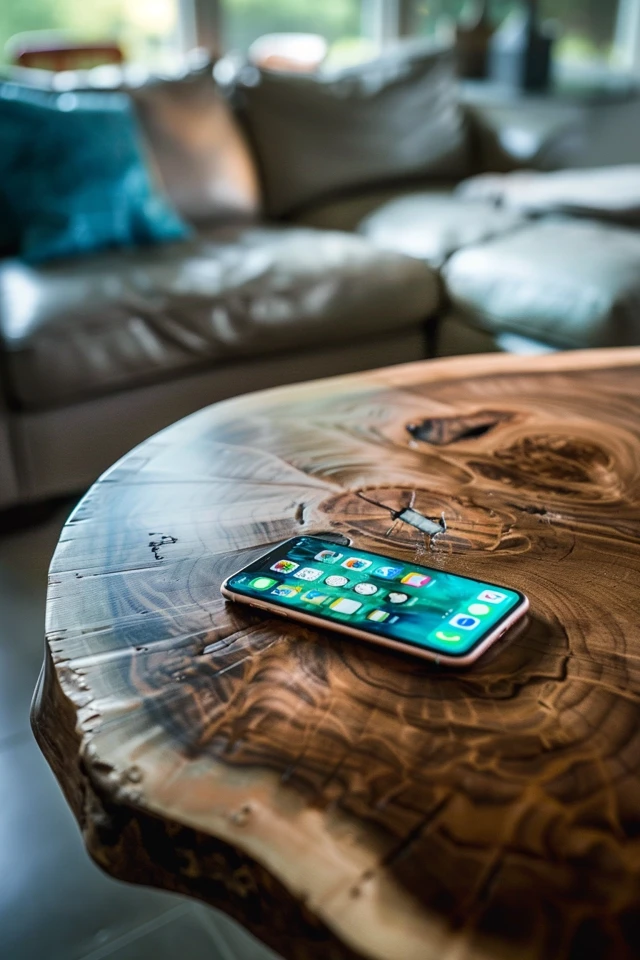Hello! Are you tired of constantly running out of storage space on your phone? Is your digital clutter hindering your productivity? Well, fret not! In this article, I will guide you through the process of deep cleaning your phone storage and decluttering your digital spaces. By following these expert-recommended tips, you’ll be able to organize your phone storage and optimize its performance.
First and foremost, let’s talk about the importance of phone storage organization. Your phone is not just a device; it’s a treasure trove of memories, essential documents, and personal information. To ensure that your phone functions seamlessly, it’s crucial to maintain a clutter-free digital space.
To begin your digital decluttering journey, let’s take a look at some key steps you can take to deep clean your phone storage:
Key Takeaways:
- Regularly clean up your phone storage to free up space.
- Back up your data and delete unnecessary files and apps.
- Organize your phone screen and install productivity-enhancing apps.
- Maintain your digital spaces by regularly reviewing and deleting duplicate or old files.
- Consider utilizing cloud storage services for secure data backup.
Now that we’ve covered the importance of phone storage cleanup and organization, let’s move on to the specifics. In the next section, I will guide you on how to back up your phone and delete unnecessary items. Stay tuned!

How to Back Up Your Phone and Delete Unnecessary Items
Ensuring the safety of your data and freeing up storage space are essential steps in phone maintenance. By backing up your phone and deleting unnecessary items, you can protect your valuable information and optimize your device’s performance. Follow these expert-recommended tips:
1. Back Up Your Phone
Backing up your phone is crucial in case of device failure, loss, or accidental deletion. By creating a secure backup, you can easily restore your data to a new device or retrieve it if needed. Here’s how:
- Use Cloud Storage: Take advantage of cloud storage services like Google Drive, iCloud, or Dropbox to back up your data. These platforms provide free or paid options and allow you to store photos, videos, contacts, and documents securely.
- Enable Automatic Backups: Set up your phone to automatically back up your data at regular intervals. This ensures that you have the most recent version of your files saved in the cloud.
- Verify Your Backup: Periodically check your backups to ensure they are functioning correctly. Test the restoration process on a separate device or computer to confirm that your data can be easily retrieved.
By regularly backing up your phone, you can restore your data quickly and effectively, even in the event of a device malfunction or loss.

2. Delete Unnecessary Items
As our phone storage fills up with photos, videos, apps, and files, it’s important to regularly declutter and free up space. Removing unnecessary items not only increases storage availability but also improves your device’s overall performance. Here’s how to do it:
- Delete Unused Apps: Go through your phone’s apps and uninstall those that you no longer use. Not only will this free up storage, but it will also reduce clutter on your home screen.
- Remove Duplicate Photos: Duplicate photos can take up a significant amount of storage space. Use apps or built-in features that help identify and remove duplicate images, keeping only the best version.
- Clean Up Media Files: Review your photos, videos, and audio files, and delete any that no longer serve a purpose. Consider transferring them to cloud storage or external devices for long-term storage.
- Clear Cache and Temporary Files: Over time, cache and temporary files can accumulate and take up valuable space. Use the built-in storage management tools or third-party apps to clear these files regularly.
Remember, deleting unnecessary items should be done with caution. Always double-check the contents before permanently removing them, especially when dealing with important documents or sentimental media.
By implementing these steps, you can back up your phone and protect your data while also freeing up valuable storage space for a smoother user experience.

Organizing Your Phone Screen and Maintaining Digital Spaces
When it comes to using your phone efficiently, keeping your screen organized and maintaining your digital spaces is key. By following these simple tips, you can optimize your phone’s functionality and improve your overall user experience.
First, consider organizing your phone screen by creating folders for similar apps. Grouping your social media apps, productivity tools, and entertainment apps together can help you quickly find what you’re looking for without scrolling through endless pages. Simply drag and drop apps onto one another to create folders and give them clear, descriptive names.
In addition to organizing your app layout, take some time to optimize your phone’s home screen for easy access to frequently used apps and widgets. Arrange your most frequently used apps on the home screen, relegating less frequently used ones to secondary pages. Customize your layout based on your personal preferences and the apps you use most often.
Managing your phone’s storage is also crucial for maintaining digital spaces. Regularly declutter your phone by deleting unused apps, clearing old messages and emails, and removing unnecessary files. By freeing up storage space, you can ensure your phone runs smoothly and efficiently.
Lastly, consider utilizing digital space organization tools that are available on your phone. Many smartphones offer features such as app suggestions, screen time management, and automatic app organization. Take advantage of these features to streamline your digital spaces and enhance your productivity.
By effectively organizing your phone screen and maintaining digital spaces, you can make the most of your phone’s capabilities and improve your overall user experience. Take the time to implement these tips and enjoy a clutter-free and efficient smartphone usage.

